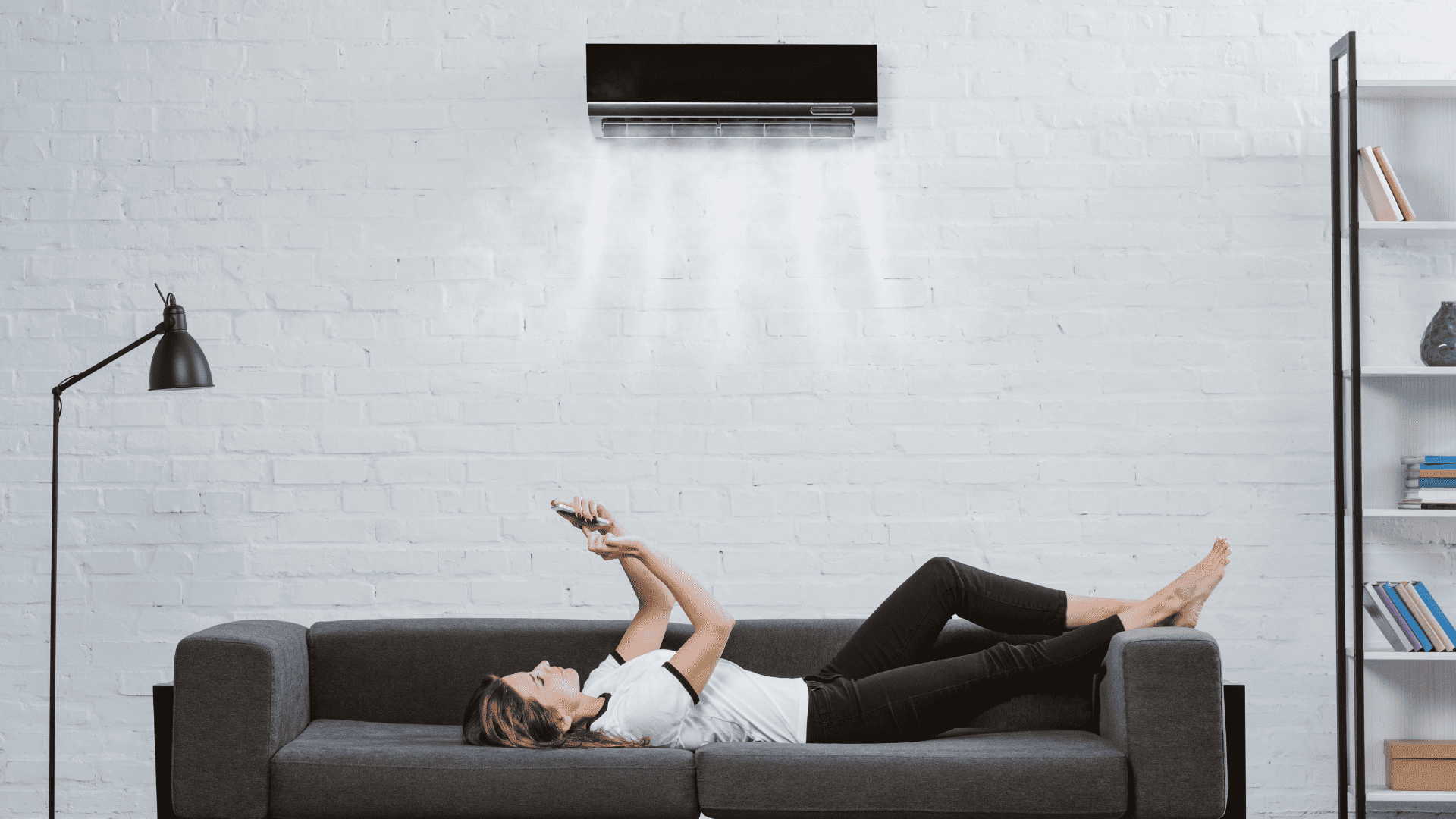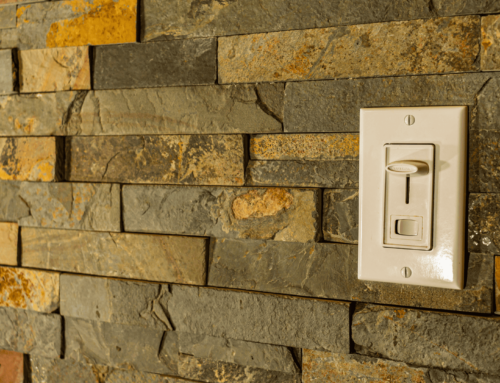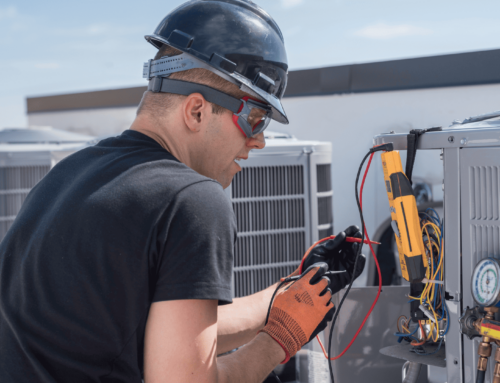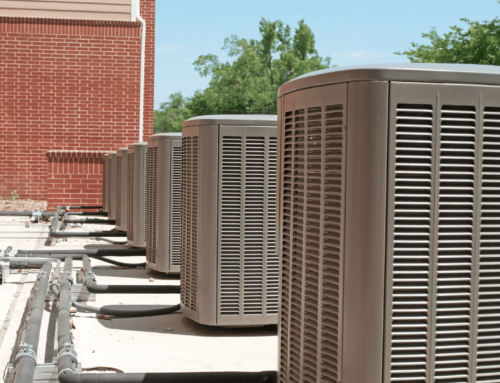
How Air Conditioners Work
All air conditioners are divided into a cold side and a warm side. As refrigerant enters the cold side, it passes through the evaporator valve, which converts the liquid refrigerant into a gas. This is an endothermic reaction, which lowers its temperature so it can absorb heat. As the refrigerant travels through the evaporator coils, a fan blows air over them, chilling the air before releasing it back into your home.
Any moisture in the air turns into water as soon as it makes contact with the coils, the way condensation forms on a cold glass on a hot day. The water is collected by a drain connected to your pipes or gutter system. Once the refrigerant has finished looping through the evaporator coils, it’s drawn into the condenser, which converts it back into liquid, an exothermic process, which raises its temperature.
Then the warm liquid loops through the condenser coils (the warm side), which uses a fan to dispel the heat absorbed on the cold side. As the warm air is exhausted outdoors, the refrigerant is drawn back to the evaporator valve, to start the cycle over again.
How Ductless Air Conditioners Work
This process is the same in both central and ductless air conditioners. Except that in a ductless air conditioner, the evaporator coils are located inside your home, while the condenser coils are located outside. Each unit is self-contained, with its own fan and piping, connected by electrical wiring and refrigerant tubing.
Rather than circulating air throughout the entire house, the indoor unit circulates cold air in a single room. The evaporator coils and blower fan are housed in a modular case mounted to your wall. Air is drawn in through the top and channeled out through the bottom. The condenser coils are housed in a narrow cabinet outside. Refrigerant is passed back and forth through a three-inch hole in the wall, while a drain removes condensation.
Benefits
Ductless air conditioning offers several advantages over central air conditioning, which is why it’s become such a common sight in so many homes across America. Switching to a mini-split offers better:
- Efficiency. Central AC systems generally lose 20-30 percent of their energy transporting cool air through your ventilation shafts. But because mini-split systems deliver cold air directly where it’s needed, they don’t suffer any significant energy loss.
- Noise Reduction. Long refrigerant lines let you place outdoor compressors far from your house, away from gathering spots like decks, patios, pools, and fire pits, for some much needed peace and quiet.
- Installation Costs. No ducts mean contractors don’t have to cut through walls or ceilings to set up your air conditioning. All they need to do is drill a small hole and mount the unit to the wall. And because the indoor unit is powered by the compressor outside, there’s no additional wiring required either.
- Flexibility. Ductless air conditioners are zone cooling systems. Rather than cool your entire home, they focus their energy on specific areas, with a separate unit and thermostat. Zone cooling is not only more efficient. It also creates customized climate control, allowing you to adjust the temperature in each room individually.
Downsides
For homes without ductwork, mini-split systems are the cheaper choice. However, if your house is already equipped with vents and conduits, then hooking up a central AC system is generally less expensive than installing a ductless one. But if you can afford the higher up-front costs, you’ll wind up saving more in the long run due to lower energy bills.
And while outdoor compressors can be placed in out-of-way locations, the same isn’t true of the indoor units. They have to be placed prominently on the wall or ceiling, making them a bit of an eyesore to some people, even though modern designs are as small and sleek as possible.
Protecting Your Cooling System
Air conditioners often break when you need them most. Don’t let a busted AC throw your home and finances into chaos. Protect yourself with a HomesentialTM warranty. We cover all the major components in your cooling system, including the compressor, fan motor, and condenser coils ‒ so you don’t pay a dime to have them repaired. We handle everything, including the contractor. There are no deductibles or service fees. You pay only a low monthly premium, less than $25, for complete protection and peace of mind. Sign up today!






